Ryan Sanford
Group Activity Detection from Trajectory and Video Data in Soccer
Apr 21, 2020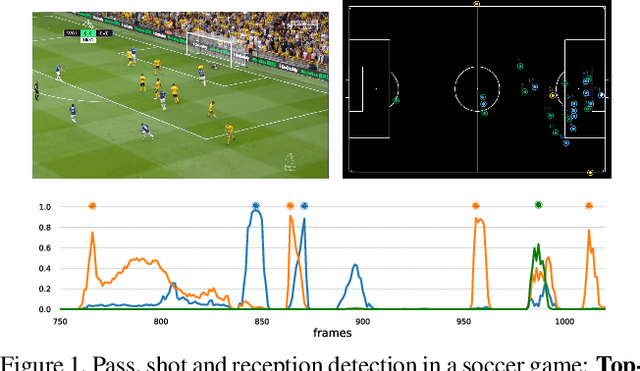
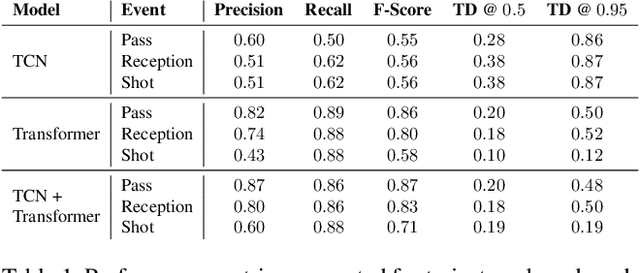
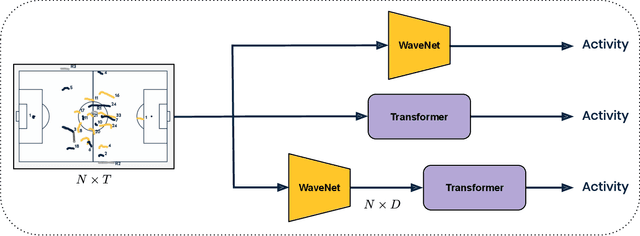
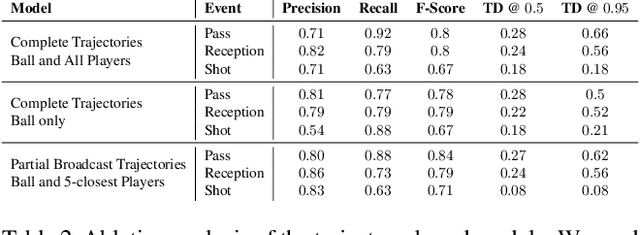
Abstract:Group activity detection in soccer can be done by using either video data or player and ball trajectory data. In current soccer activity datasets, activities are labelled as atomic events without a duration. Given that the state-of-the-art activity detection methods are not well-defined for atomic actions, these methods cannot be used. In this work, we evaluated the effectiveness of activity recognition models for detecting such events, by using an intuitive non-maximum suppression process and evaluation metrics. We also considered the problem of explicitly modeling interactions between players and ball. For this, we propose self-attention models to learn and extract relevant information from a group of soccer players for activity detection from both trajectory and video data. We conducted an extensive study on the use of visual features and trajectory data for group activity detection in sports using a large scale soccer dataset provided by Sportlogiq. Our results show that most events can be detected using either vision or trajectory-based approaches with a temporal resolution of less than 0.5 seconds, and that each approach has unique challenges.
Actor-Transformers for Group Activity Recognition
Mar 28, 2020
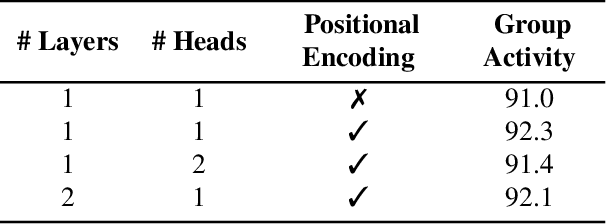
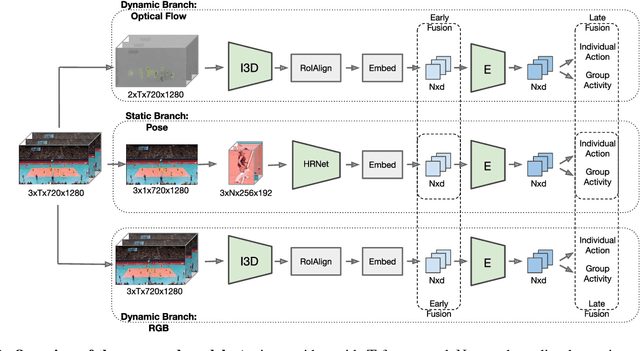
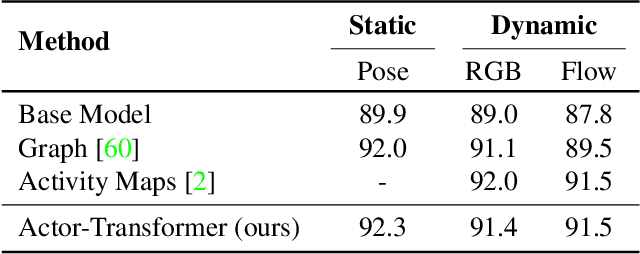
Abstract:This paper strives to recognize individual actions and group activities from videos. While existing solutions for this challenging problem explicitly model spatial and temporal relationships based on location of individual actors, we propose an actor-transformer model able to learn and selectively extract information relevant for group activity recognition. We feed the transformer with rich actor-specific static and dynamic representations expressed by features from a 2D pose network and 3D CNN, respectively. We empirically study different ways to combine these representations and show their complementary benefits. Experiments show what is important to transform and how it should be transformed. What is more, actor-transformers achieve state-of-the-art results on two publicly available benchmarks for group activity recognition, outperforming the previous best published results by a considerable margin.
 Add to Chrome
Add to Chrome Add to Firefox
Add to Firefox Add to Edge
Add to Edge